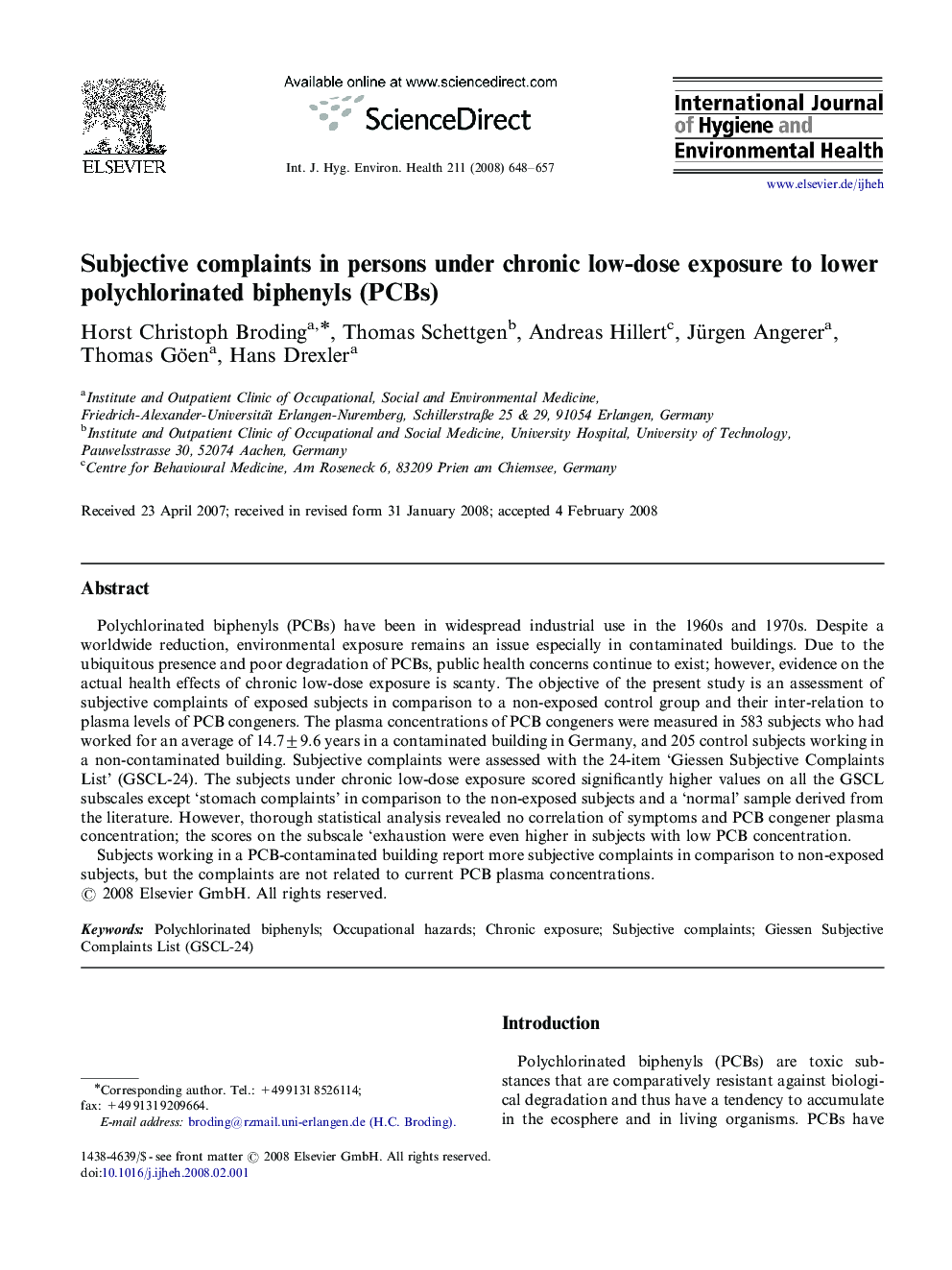| Article ID | Journal | Published Year | Pages | File Type |
|---|---|---|---|---|
| 2589192 | International Journal of Hygiene and Environmental Health | 2008 | 10 Pages |
Polychlorinated biphenyls (PCBs) have been in widespread industrial use in the 1960s and 1970s. Despite a worldwide reduction, environmental exposure remains an issue especially in contaminated buildings. Due to the ubiquitous presence and poor degradation of PCBs, public health concerns continue to exist; however, evidence on the actual health effects of chronic low-dose exposure is scanty. The objective of the present study is an assessment of subjective complaints of exposed subjects in comparison to a non-exposed control group and their inter-relation to plasma levels of PCB congeners. The plasma concentrations of PCB congeners were measured in 583 subjects who had worked for an average of 14.7±9.6 years in a contaminated building in Germany, and 205 control subjects working in a non-contaminated building. Subjective complaints were assessed with the 24-item ‘Giessen Subjective Complaints List’ (GSCL-24). The subjects under chronic low-dose exposure scored significantly higher values on all the GSCL subscales except ‘stomach complaints’ in comparison to the non-exposed subjects and a ‘normal’ sample derived from the literature. However, thorough statistical analysis revealed no correlation of symptoms and PCB congener plasma concentration; the scores on the subscale ‘exhaustion were even higher in subjects with low PCB concentration.Subjects working in a PCB-contaminated building report more subjective complaints in comparison to non-exposed subjects, but the complaints are not related to current PCB plasma concentrations.
